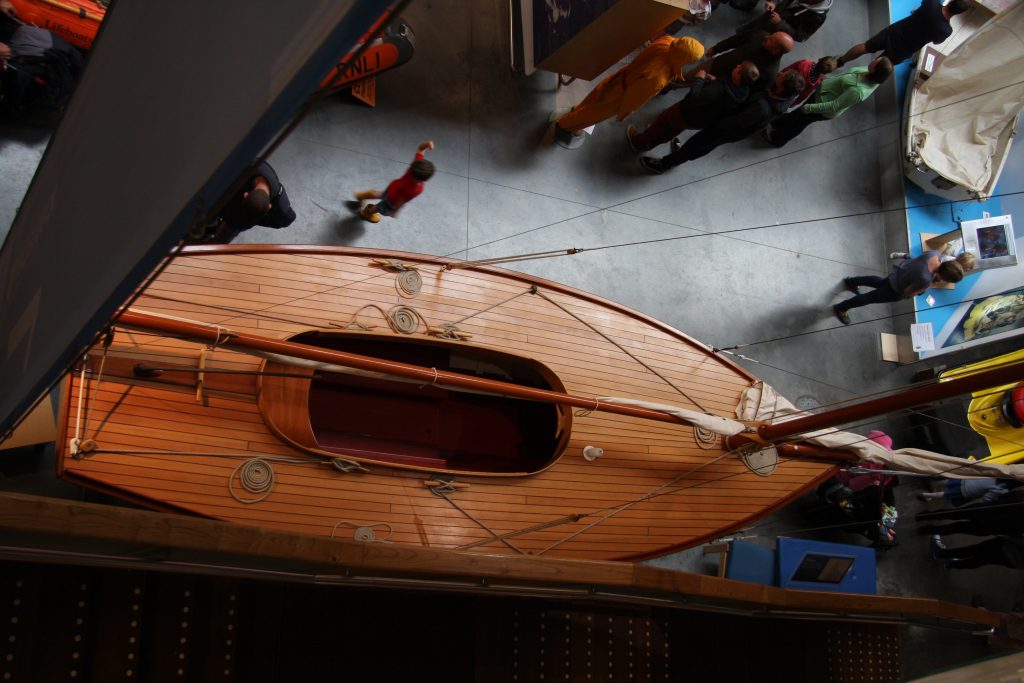
William Fife (1857-1944) was one of the world’s foremost yacht designers.
His father and grandfather had also been boatbuilders and had a construction yard at Fairlie, on the River Clyde. Fife’s yachts achieved a reputation for superb craftsmanship and a good turn of speed. His clients included Sir Thomas Lipton, the grocery millionaire, who commissioned Fife to design Shamrock, the Americas Cup challenger. Fricka was commissioned by Robert Mann, a prominent Glasgow businessman. The 17/19 prefix relates to the difference between the length along the boat’s waterline – 17 feet – and its deck -19 feet.
Small dinghy sailing was still in its infancy, but yachting was becoming a popular sport among the Victorian middle class, and it was boats such as Fricka that were appealing to a wider audience. During its first season of racing Fricka achieved seven first and eight second prizes out of 25 starts. It was sailing until 1973, when it was purchased by the National Maritime Museum, Greenwich. In 2001 it was considered to be an important boat for the then new National Maritime Museum Cornwall (NMMC), and the decision was made to undertake a comprehensive restoration programme. There followed a close collaboration between NMMC and the Liverpool Maritime Museum’s Shipkeeping Department, headed by John Kearon. Meticulous research was carried out to ensure that the restoration would be true to William Fife’s design.
It became apparent through investigation that Fricka had undergone many structural changes throughout its life with the result that it was difficult to picture the original boat: the only records that remained were a photograph or two and a basic lines plan.
Few 17/19s were built but during the research it was discovered that another yacht of the same design, Hatasoo, was based in Scotland and still sailing. Hatasoo was a contemporary of Fricka’s and the two boats often competed against each other in races on the Clyde Estuary. Much of Hatasoo’s structure and arrangement was original, which was important to the restoration team. Restoration work was carried out at Liverpool over the course of the next year and information from Hatasoo enabled the team to fill in the remaining pieces of the jigsaw. Some 15 months after the project began, following much painstaking work conserving and restoring as much original material as possible, Fricka was fully restored to its former glory.
Dimensions:
Length 5.8m
Beam 2.15m
Draft 1.4m


